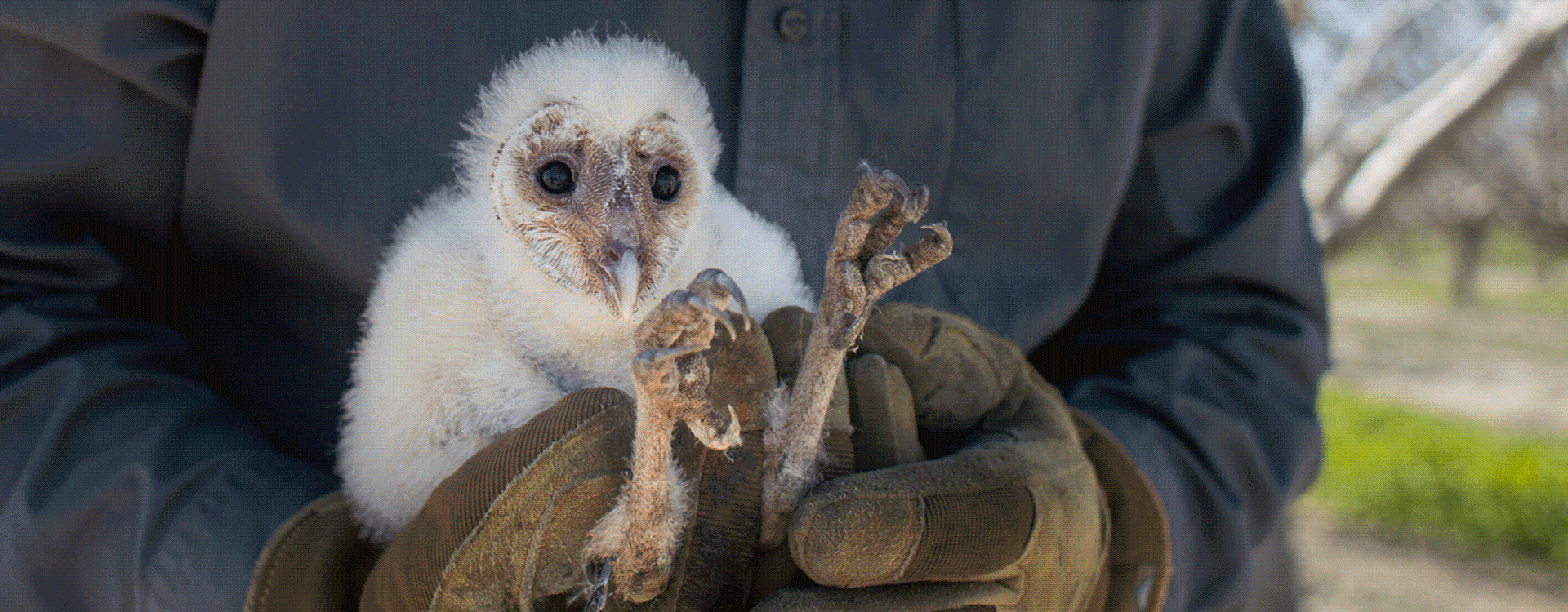
Farming responsibly
for a sustainable future
Growers in California, Arizona and New Mexico have a deep commitment to wisely use natural resources, human resources, and incorporate innovation and the newest technologies to produce the world’s finest pistachios. They wear many hats as environmental stewards, caring and compassionate employers, significant contributors to local, state and national economies, and conscientious producers of a protein-packed, nutrient-dense food for the world. We invite you to learn more about the men and women who devote their livelihoods to bring American-grown pistachios to you and your family.
Pistachios as part of a sustainable diet
Scores of health studies document the power of pistachios, the tiny nut that packs an incredible punch of energy and nutrition, and addresses some of today’s most pressing and perplexing health concerns. Pistachios are considered a key element of the Mediterranean Diet, a diet inspired by the eating habits of the peoples of Greece, Southern Italy, and Spain that incorporates the key ingredients of healthy eating --- fish, olive oil, whole grains, and plant-based foods like legumes, fruits, nuts, and vegetables. Consuming pistachios and other nuts may boost “good” HDL-cholesterol levels in the blood and reduce the risks of stroke.i Current findings indicate that patients who consumed pistachios had improved heart health, reduced risk of breast cancer, and lowered the incidence of gestational diabetes.ii
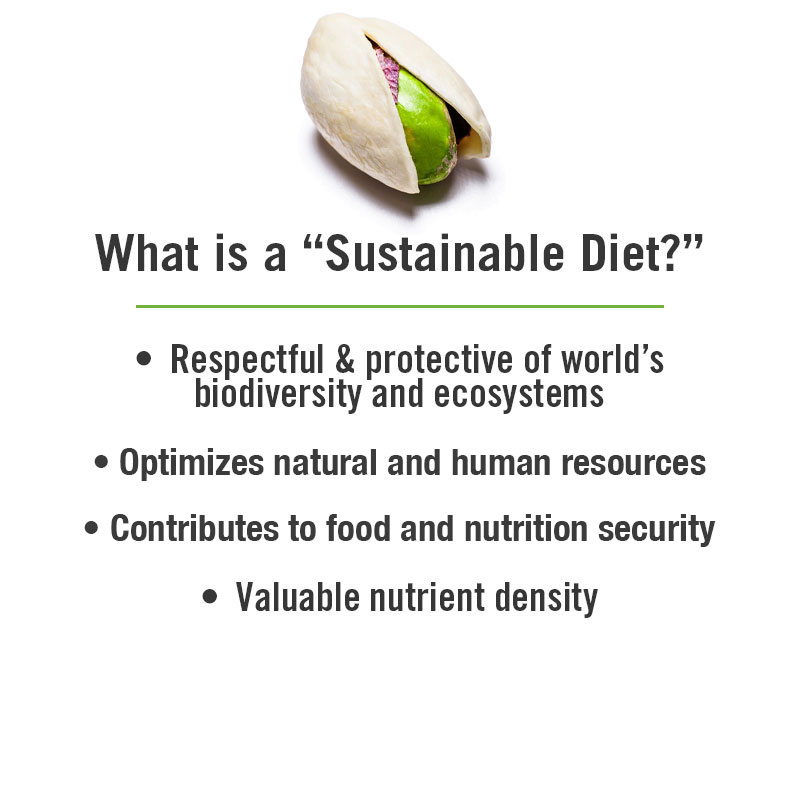

In a nutshell, here are some additional facts about pistachios:
-
Pistachios are a plant-based protein and they are a valuable source of energy to fuel active bodies. A one-ounce serving contains 6 grams of quality, easily-digested protein.
-
In addition to being a good source of protein, pistachios contain all nine of the essential amino acids in adequate amounts for adults, so qualify as a “complete protein.”
-
In addition to their value as a protein source, a one-ounce serving contains 3 grams of fiber and only 160 calories --- among the lowest in calories per serving of all nuts.iii
-
Health studies have documented that pistachios help maintain normal blood pressure and combat hypertension. Pistachios contain healthy levels of important minerals such as potassium, magnesium, and calcium. In fact, pistachios are the richest source of potassium of all the nuts.
-
Pistachios are packed with important vitamins, fiber, and other essential minerals including copper, manganese, potassium, calcium, iron, magnesium, zinc, and selenium.
-
Eating pistachios supports healthy weight. Numerous health studies suggest that adding pistachios to the diet increases nutrient uptake and does not contribute to an increased weight, waist circumference or body mass index.iv
-
Eating pistachios may preserve skin health due to the antioxidant and anti-inflammatory roles played by carotenoids, flavonoids and tocopherols in pistachios, which may play a role in the promotion of skin health and protection against photodamage.v
The story about the sustainability of American-grown pistachios and their benefit to our environment is a powerful one. Sustainable diets, those diets with environmental impacts and which contribute food and nutrition security and to a healthy life are becoming far more important today. Sustainable diets are more respectful and protective of our world’s biodiversity and ecosystems while they are optimizing natural and human resources as defined by the Food and Agriculture Organization of the United Nations.vii
As more focus is devoted to sustainable issues associated with dietary guidelines, there is growing evidence that our food choices impact more than our health; they impact the availability and health of our planet’s resources that are needed to sustain a growing world population. As we learn more about the effects of greenhouse gas emissions, there is greater recognition about the positive role of shifting to plant based diets.
Read moreInnovation
and technology
Maybe it’s because the pistachio industry is relatively new in the United States, with commercial production beginning as recently as the 1970’s, that they are quick to adopt new technologies and practices that result in continuous improvement. American pistachio growers are constantly investing in research and innovation to develop the best practices in the utilization of renewable energy and overall farming efficiency. Growers and processors generate solar energy to power irrigation pumps, processing equipment, electric vehicles, and to power the state’s electric grid. Harvest technology, such as driverless tractors and farm machinery that uses GPS and other wireless technologies, streamline operations and lessen dependence on fossil fuels. Drones and new fertigation techniques pinpoint energy-eating issues that may exist in an orchard for quick repair. American pistachio growers will never rest in their quest to invent, invest and adopt new technologies that make their operations more sustainable.

Environmental stewardship
and higher yields through regenerative practices
The American pistachio community is at the forefront of efforts to promote a sustainable environment and to conserve our precious water and soils. The pistachio tree is, by nature, a drought-resistant plant that originated in the middle east, but precise applications of water at particular times in its growth cycle are critical to produce perfect pistachios. Growers work closely with university researchers, irrigation specialists, and University of California Cooperative Extension farm advisors to adopt the most progressive water management technology and irrigation programs in the world. Water used on pistachio farms is often recycled, not only for plant operations and tree nutrition, but to support wildlife and diverse habitat on farms and lands adjacent to pistachio orchards.
Public Policy Institute of California
California pistachio growers and producers of other fruit and nut crops have dramatically increased yields while reducing water consumption. Farm production from the 9 million acres of irrigated cropland generated 60% more gross product in 2014 than in 1980, despite water usage being 15% less.
Source: Public Policy Institute of California 2016
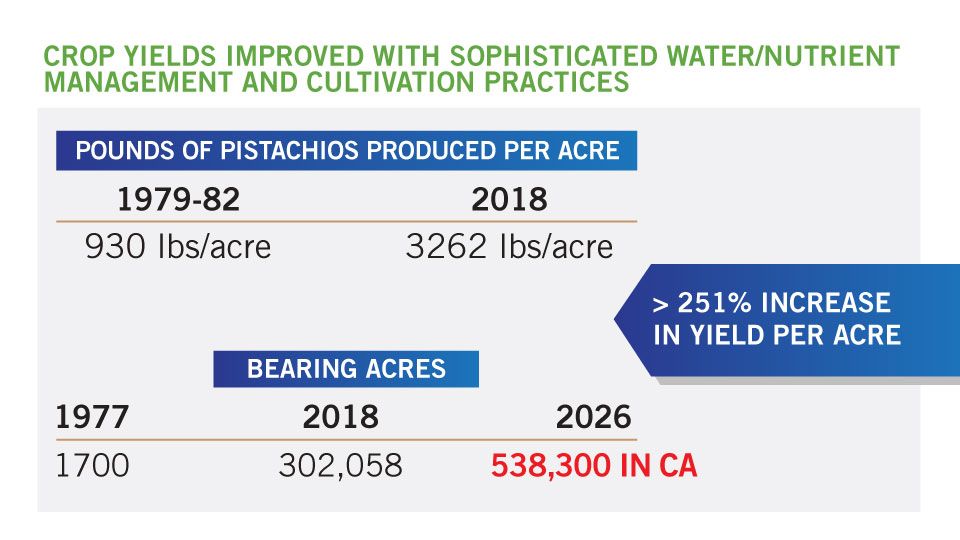
Acres of land are used to compost prunings, which returns nutrients to the soil that’s expected to support the same orchards for generations. The next time you see vegetation growing between rows of pistachio trees, know that it serves a purpose—it’s promoting good soil bacteria and loosening the soil to allow water to penetrate while reducing salts in the soil. Using every part of the nut, discarded shells find utility by paving farm country roads, minimizing dust and improving air quality. Other byproducts find uses in multiple applications, including biofuels and even cosmetics.
About Water Usage
The pistachio plant is native to arid climates, so it has adapted well to its new growing regions in Arizona, New Mexico and California (mostly the dry San Joaquin Valley). Producers have made water efficiency a top priority by adopting water conservation techniques and irrigation systems that stretch precious water supplies and protect the soil from air and water erosion. Having endured several severe droughts, by necessity, pistachio growers have had to adapt and innovate.
A variety of tools and techniques keep production water-wise: soil probes, tensiometers and sensors that help to monitor water rate, soil temperature and evapotranspiration rates—the rate by which water is transformed from the land to the atmosphere by evaporation from the soil and transpiration from their trees. The development of new apps has allowed growers to use their smart devices to monitor in real time the movement of water through the soil to ensure that it reaches and stays where it’s needed in the root zone. Growers today have a wealth of data at their disposal—weather and climatic information to help them devise efficient irrigation schedules, and satellite imaging to help them identify areas of an orchard that may be deficient in water and crop nutrients, or where those precious inputs are being over-applied.
UNESCO Economic Study
A 2011 study on world pistachio production and water efficiency showed American pistachio growers are the most efficient producers in the world in terms of gallons of water needed to produce a pound of pistachios.
Source: UNESCO, Mekonnen, M.M. and Hoekstra, A.Y., 2011
Today, micro-nutrient fertilizer is carefully metered to pistachio trees through drip irrigation systems to ensure they are applied when and where trees need them most for optimal production. This very precise measurement and application of nutrients through drip systems has earned a new name in agriculture: FERTIGATION.


The Air Force
in the Orchard
Growers have enlisted a veritable “air force” of predatory birds to naturally protect orchards from rodents, coyotes and nut-eating birds who destroy crops. Placing nesting boxes in and at the perimeter of orchards provides a desirable home for owls, American kestrels, hawks, and other raptors who keep pests at bay—a modern solution that eliminates the use of rodenticides and traps. Working with the environment is a tool for agronomic success.
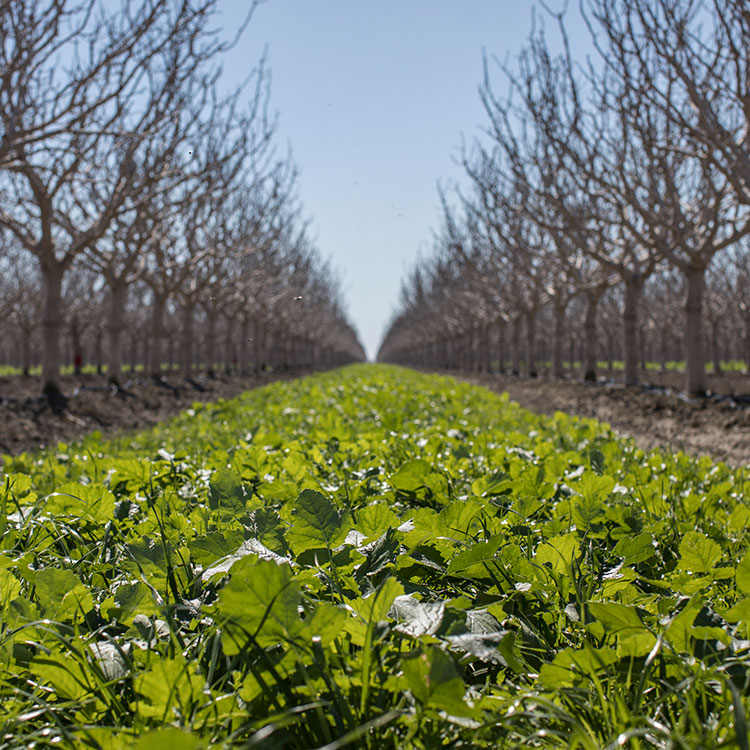

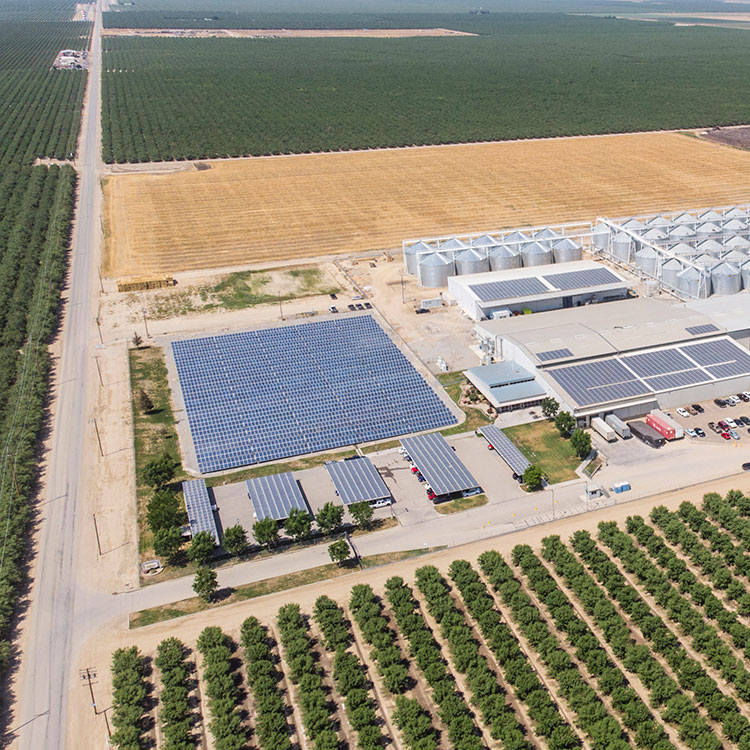
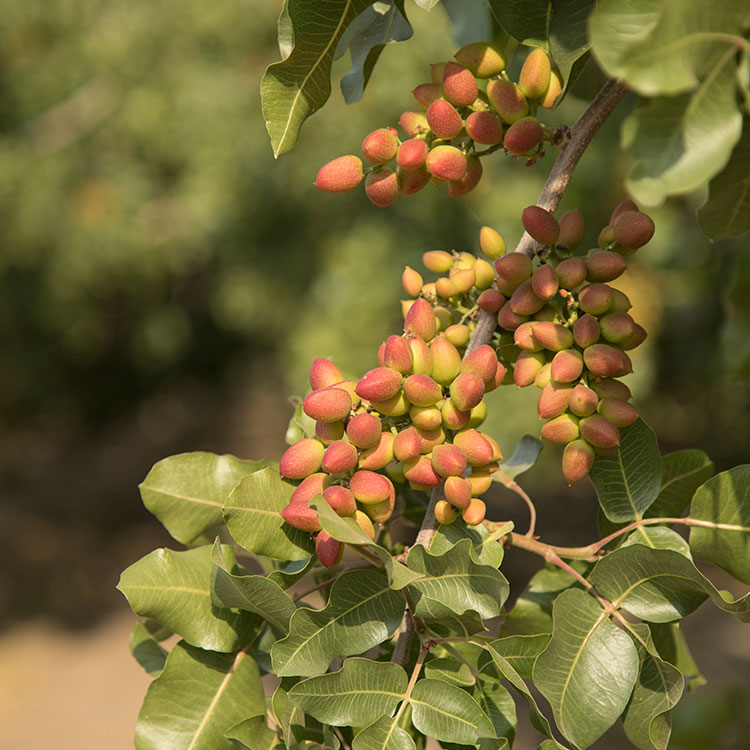
Labor Relations
In the 1970’s, the fledgling pistachio industry supported just a few dozen employees. Today, the workforce in California, Arizona and New Mexico has grown right along with the surge in newly planted orchards. According to a 2017 economic study commissioned by APG, the pistachio industry in California alone has created more than 22,600 full-time jobs. The best part is this: Many of the employees who came into the industry more than 40 years ago are still in it today.
Because the American pistachio industry is heavily mechanized, the health and safety of workers is the #1 priority. Pistachio farms and processing facilities abide by the strictest workplace standards and rules in the nation to ensure their employees have a safe, secure and productive work environment.
Wellbeing of employees is a far-reaching concept, ranging from onsite health check-ups and medical care to the provision of college scholarships for the children of employees. “The people who work for us, some for two and three decades or more, now have grown children who have their own families,” said Justin Wylie, of Wylie Farms in Madera County, California. “Why, I can point to the same guys who taught me to drive a tractor. They’re part of our family.”
Scores of laborers who came to the U.S. on a work visa earned their U.S. citizenship with the help of their employers and became valued contributors in their communities, buying homes, having children and having a rewarding career in the pistachio industry. Many are now the managers and experts who are supporting one of America’s fastest-growing agricultural commodities. “Every day I think of how my decisions as a farmer affect 60 families,” says grower Larry Lowder.
Federal law in the United States sets minimum social and economic rights for workers, but the pistachio-producing states of Arizona and New Mexico go beyond those minimums, with California exceeding the federal minimum wage by more than 60 percent.


Social Responsibility
Pistachio production in all three states is largely located in rural communities that are considered underserved with little economic opportunity for small populations residing there. APG’s member processing facilities are often the economic engine of their community. Therefore, great attention is given to serving the surrounding community so it will thrive. All of our processors are growers themselves and contribute greatly, ranging from the building of community parks and playground facilities, schools and libraries, to scholarships for kids.
While serving their immediate communities, many also fund international programs, such as hospitals, education and agricultural education programs. The American pistachio industry is a model for “doing good while doing well.”
“We don’t do it because it’s good business,”
“We do it because it’s just the right thing to do.”
– Jim Maxwell, Farm Manager









